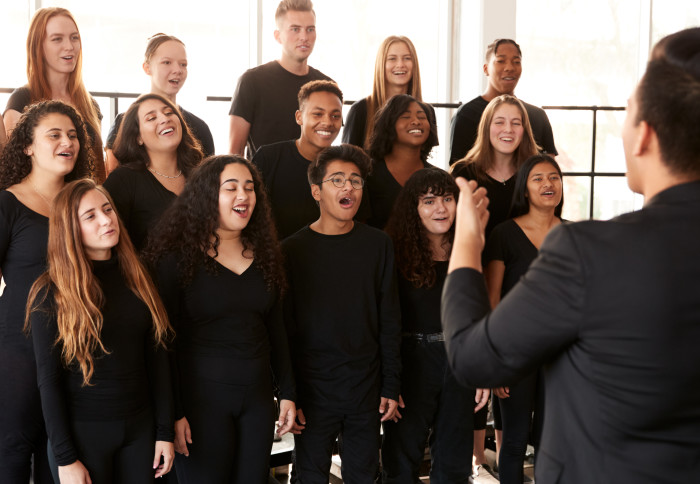Singing is no more risky than talking finds new COVID-19 study

Collaborative study finds that how loud you are is key when considering levels of particles produced by singing or talking.
Researchers have shown that singing does not produce substantially more respiratory particles compared to speaking at a similar volume. The initial findings, which are yet to be peer reviewed, are vital in providing COVID-19 guidance for live musical performances and the safe distancing of performers and audience. The performing arts has been badly affected during the coronavirus pandemic with live musical performances cancelled for many months because singing was identified as a potential “higher risk” activity.
"“Our research has provided a rigorous scientific basis for COVID-19 recommendations for arts venues to operate safely" Professor Jonathan Reid University of Bristol
Scientists have discovered that there is a steep rise in aerosol mass with increase in the loudness of the singing and speaking, rising by as much as a factor of 20-30. However, singing does not produce substantially more aerosol than speaking at a similar volume. And you will be pleased to know that whatever style of music you enjoy the results are the same. There were no significant differences in aerosol production for different types of music (choral, musical theatre, opera, jazz, gospel, rock and pop) or between men and women.
The research project, known as PERFORM was supported by Public Health England and the Department for Digital, Culture, Media and Sport, and carried out by a collaborative team from Imperial College London, University of Bristol, Wexham Park Hospital, Lewisham and Greenwich NHS Trust and Royal Brompton Hospital. Professors Gavin Donaldson and Pallav Shah, from the National Heart and Lung Institute, Imperial, are both authors on this new study. Professor Shah comments "The PERFORM study has shown that the differences between activities such as singing and speaking on aerosol generation is generally small. However, increasing volume significantly generates more aerosol. Therefore, singing with the use of microphones should be safer".
Standing out from the crowd
Although a number of studies reported online have attempted to examine the quantities of particulate matter expelled by performers, they have struggled to correctly quantify the aerosol and droplets because of the large number of ambient particles in the environment, making it impossible to identify which particles come from the performer and which are just already present in the space. Carrying out measurements in an orthopaedic operating theatre, an environment of “zero aerosol background”, has allowed the team to unambiguously identify the aerosols produced from specific vocalisations.
Music venues and organisations could consider treating speaking and singing equally, with more attention focused on the volume of the vocalisation, the number of participants, the type of room in which the activity occurs (i.e. air exchange rate) and the duration of the rehearsal and period over which performers are vocalising. Indeed, based on the differences observed between vocalisation and breathing and the likely difference in the number of performers and audience members in many venues, singers may not be responsible for the greatest production of aerosol during a performance and ways to ensure adequate ventilation in the venue may be more important than restricting a specific activity.
These recommendations will add to the research that can move towards allowing live musical performances and the safe distancing of performers and the audience, during the COVID-19 pandemic.
Jonathan Reid, Director of ESPRC Centre for Doctoral Training in Aerosol Science and Professor of Physical Chemistry in the School of Chemistry at the University of Bristol said, “Our research has provided a rigorous scientific basis for COVID-19 recommendations for arts venues to operate safely for both the performers and audience by ensuring that spaces are appropriately ventilated to reduce the risk of airborne transmission.”
Culture Secretary Oliver Dowden said: "Singing and playing music are passions for many people who will welcome the findings of this important study, which shows that there are no heightened risks associated with these activities”.
‘Comparing the respirable aerosol concentrations and particle size distributions generated by singing, speaking and breathing’ by Gregson et al. on ChemRxiv
Please note this is a preprint, it is a preliminary piece of research that has not yet been through peer review.
Article supporters
Article text (excluding photos or graphics) © Imperial College London.
Photos and graphics subject to third party copyright used with permission or © Imperial College London.
Reporter
Ms Helen Johnson
Communications Division